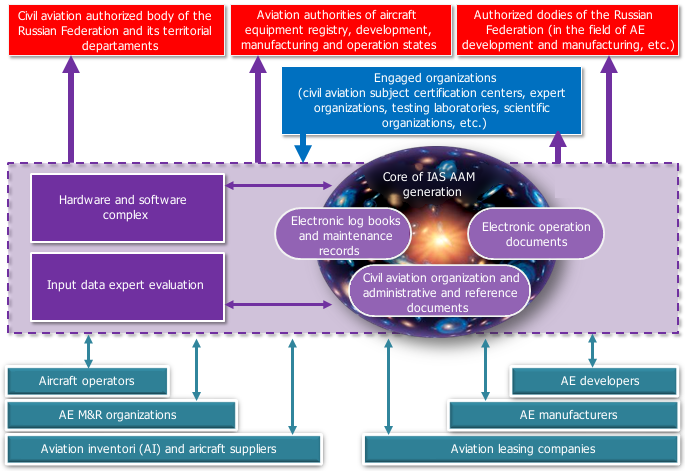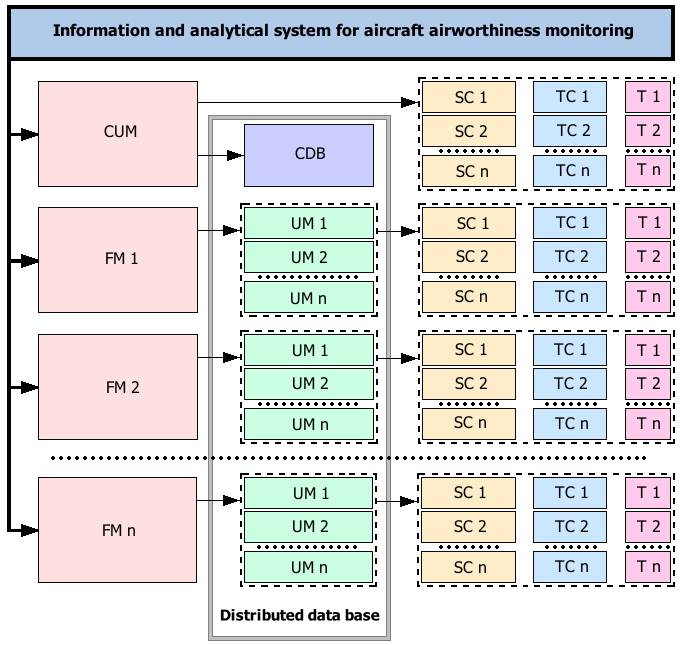IAS AAM ArchitectureOrganizational architectureList of participants of the common information space can comprise the following subjects:
The common information space is based on information resources of IAS AAM subjects. Information systems of IAS AAM subjects are inter-integrated through developed user modules and (or) data exchange interfaces. Subjects’ information systems are integrated into the system with the use of information technologies and data storage devices agreed with IAS AAM operator. Information circulating in CIS is entered, updated and available to all IAS AAM subjects in compliance with IAS AAM subjects operating procedure. The core of IAS AAM generation is regulatory and reference documents, electronic operation documents for aircraft types, and electronic log books and maintenance records for aircrafts and their components. 
Functional architectureIAS AAM has a modular structure and comprises the following parts:
IAS AAM functional architecture diagram
The framework mechanism in IAS AAM is an on-line monitoring of aircraft airworthiness and aircraft operation system including the following types of aircraft airworthiness monitoring specified by the registry state requirements:
The above listed processes in IAS AAM architecture are positioned as system functional modules FM 1 ... FM N. Each functional module consists of user modules (UM) being special information systems. Structurally each UM is a combination of software complexes (SC), task complexes (TC), and tasks (T) operating in a network multi-user mode and included into UM in compliance with functional tasks and field of activity of IAS AAM subject where UM is installed. Information systems (IS) operated by IAS AAM subject can be used as UM. If required, SC functions add to deficient functions of IAS AAM subjects IS to create uniform data formats and to ensure complete and actual information. Each UM contains local DB with information required to solve production tasks of IAS AAM subject. A package of subjects’ local data bases including CDB is a distributed DB. Information is exchanged between local DBs and CDB by way of data import-export. Information content circulating between local DB and CDB is specified by IAS AAM subject operating procedure. The number and composition of IAS AAM parts depend on types of airworthiness monitoring processes as well as on IAS AAM subject fields of activities defining the production tasks to be solved. |
|
|
©2009-2025 The Information Analysis Center of GosNII GA
· E-mail:
· Tel./fax +7 495 646-29-46
Пользовательское соглашение |
|---|
